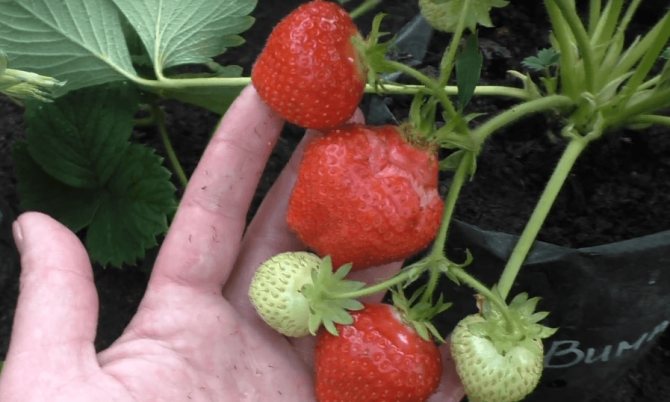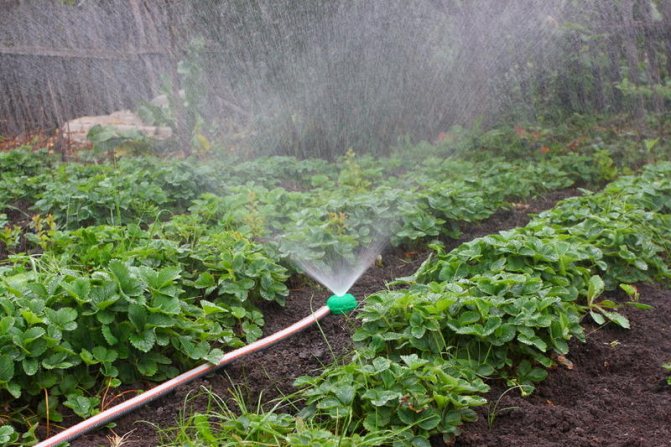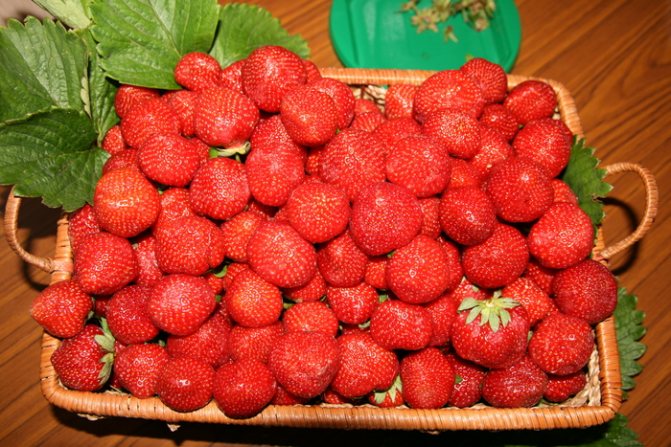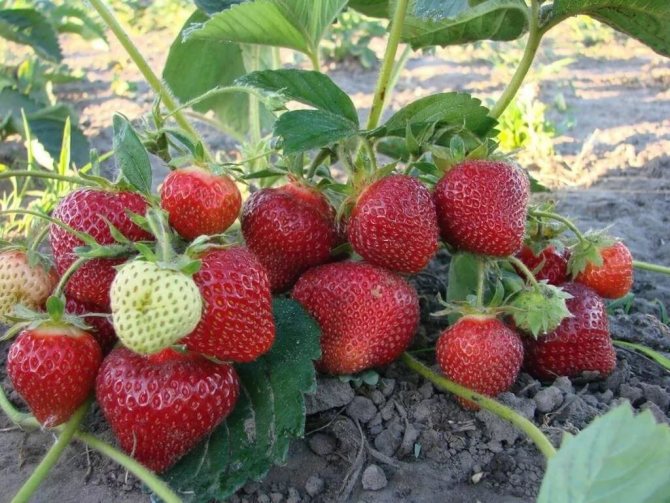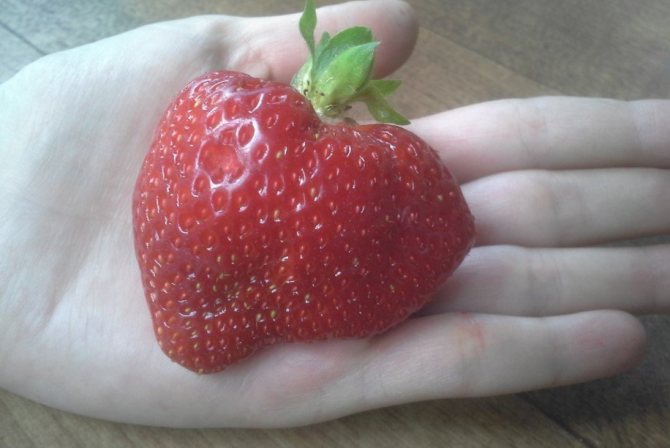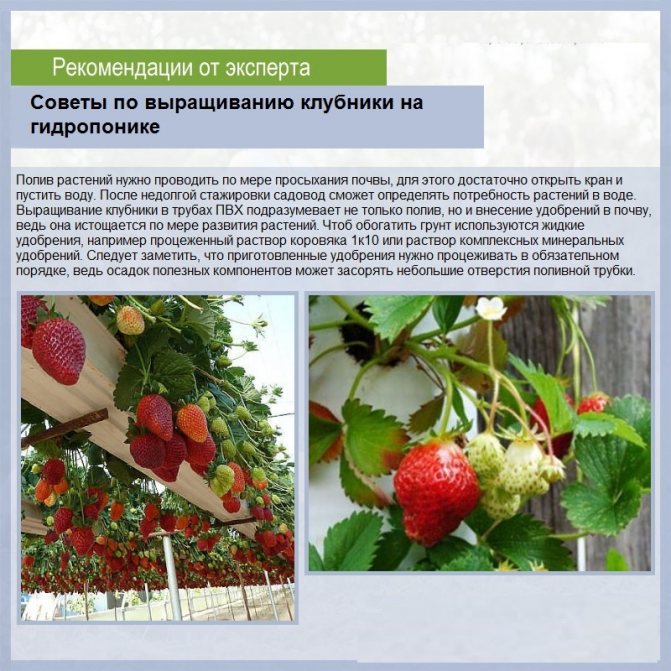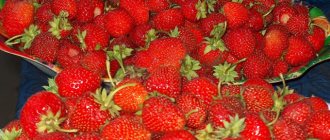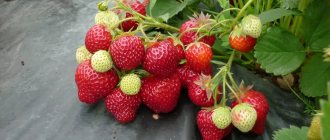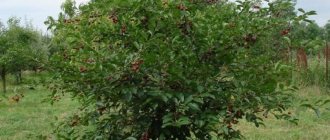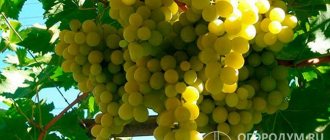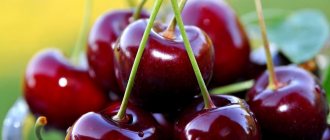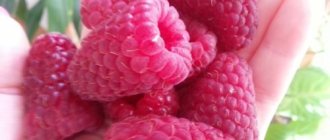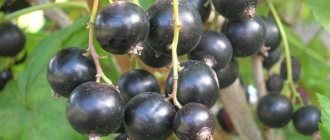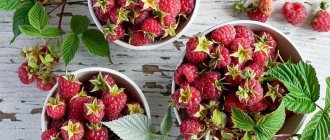"Ksima" has long been in demand on the European berry market, and in recent years has gained great popularity among Russian lovers of large sweet strawberries. It ranks among the best varieties in the Dutch Vima series, along with Rina, Zanta, Tarda and Kimberly. "Vima Ksima" is a strawberry of traditional (non-repair) fruiting, medium-late or late ripening. It is considered one of the most large-fruited and highly productive.
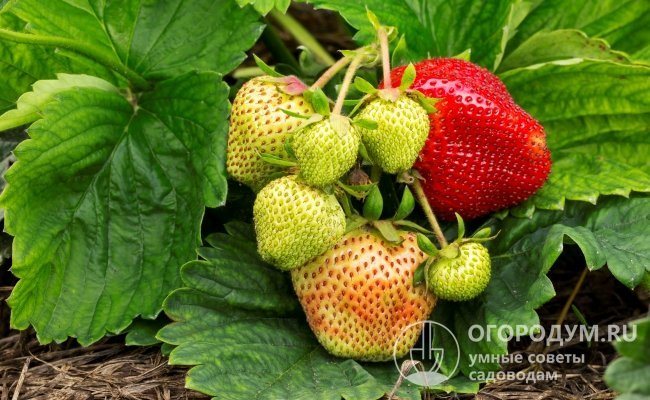
Vima Ksima strawberry (pictured) is distinguished by its large berry size and high yield, it is successfully cultivated as an amateur and commercial variety.
Common features of Wima strawberry
has a good reputation. She has specialized in the development of new varieties of strawberries since 1961. The plantations of this company are located in the south of the Netherlands, where the light, sandy soil prevails, which strawberries and strawberries love so much.
Wim's strawberry varieties, despite the fact that they are combined into one group, have different genetics. Only the varieties Zanta and Tarda are related. What is the peculiarity of this group of strawberries?


Tall peduncles
- The weight of the fruits reaches 40-60 g, and in rare cases the berries grow up to 100 g!
- The yield is high.
- Bushes are usually strong, semi-spreading or spreading.
- Peduncles are high.
- Plants are resistant to cold weather, but not all varieties tolerate frost or extreme heat.
- The taste of the berries is pleasant and sweet.
Otherwise, the characteristics of Wima varieties can vary significantly.
Important!
Vita strawberries must be transplanted every 3-5 years. If the place of cultivation is not changed, the yield will decrease.
Strawberry Wim Rin
Check out these articles as well
- How to plant a pear correctly
- How to plant cabbage for seedlings
- Roses by David Austin
- The best varieties of thick-walled sweet peppers
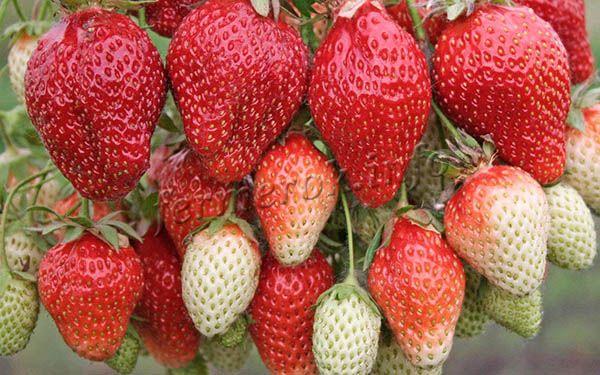

Photo of strawberry Vima Rina (Vima Rina)
The Vima Rina variety was bred by accident, during the pollination of the remontant strawberry Selva. It is of a medium-late ripening type. The bushes of this type are semi-sprawling, have many leaves. Leaves with pronounced ribs, light green color. The whiskers grow only in small numbers. Peduncles are located on a par with the leaves. The buds are always white, medium in size.
Fruits grow to 45 g on average. They are in the form of a cone, with a distinct neck. The color is dark scarlet, the skin is glossy. The pulp is firm, tender. The strawberry taste is very pleasant, 4.8 points out of 5, according to the tasters. The aroma is strong.
The Vima Rina strawberry variety has good frost resistance and moderate drought resistance. Productivity from 1 bush per season reaches 800 g. Berries are suitable for long-term transportation, they have a universal purpose.
Origin and regions of cultivation
The variety was bred by breeders (Holland) and entered into the State Registers of Belarus (in 2008), Russia and Ukraine (in 2013).
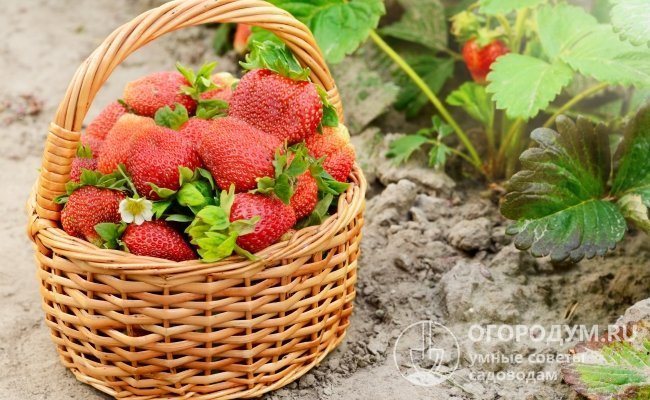

The variety is well adapted to the conditions of a temperate continental climate, provides stable productivity in the open field
"Ksima" is recommended for cultivation in the open field of the Central region of the Russian Federation, throughout Belarus, in the north-western and central regions of Ukraine.The variety is adapted to various types of soils and temperate continental climatic conditions, winter hardy.
Description of the strawberry variety Vima Zanta
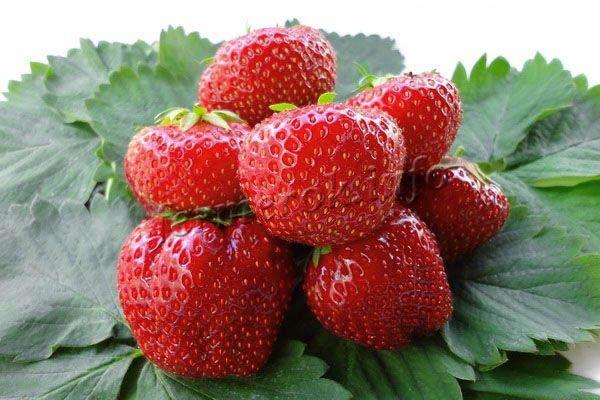

Photo of Strawberry Wim Zanta
The Vima Zanta strawberry is a variety obtained from the crossing of the Elsanta and Corona species. Ripening period - medium early. Bushes are vigorous, semi-spreading. The leaves are slightly bent inward. The plant produces a lot of whiskers. The peduncles are pubescent, located at the level of the leaves, but as the berries grow and fill, they sink lower, to the ground. The flowers are medium in size, white in color.
The berries are juicy, medium density. The shape is rounded, flattened from the sides. The color is dark red, almost no shine. There are distinctive notes of strawberry in the taste and aroma. The berries are easily detached from the stalks, there may be a cavity in the core, but most often this is observed if there was not enough watering during the ripening of the berries.
The Vima Zanta strawberry variety has a high yield. Up to 800 g of harvest is harvested from a bush per season. Drought resistance - high, frost resistance - medium. The bushes have immunity to gray rot, fusarium, verticillosis. At the same time, this plant can be affected by powdery mildew. The crop is transportable, suitable for fresh consumption, freezing, conservation.
Reproduction
As we wrote above, Wim Zant's strawberries form a lot of whiskers, so the issue of reproduction is easily resolved. But if you managed to remove all the mustache, and there is a need for new seedlings, then dividing the bush will help. Seed propagation is such a laborious process that we will not consider it.
The method of dividing the bush is expressed in dividing the mother socket in two and digging out half of the planting. The seedling is immediately planted in a prepared place without shaking off the soil from the roots. In the first three days of planting, they will look pretty frail, but then the plant will take over and begin its growth and development.
Reproduction by whiskers is even easier - they are simply dipped in cups with a substrate of earth and water. Once the mustache is rooted, it is cut from the mother bush. Within a week, a small seedling is in the stage of rooting in a glass. Then it, along with all the talker, is planted in prepared glasses with fertile fertilized soil. After 45 days, the seedling is ready for planting in a permanent place.
Strawberry Vima Tarda
We recommend reading our other articles
- When to plant zucchini for seedlings
- Warm beds
- Potato variety Zest
- Canning seamer


Photo of Vima Tarda strawberry
The Vima Tarda variety was obtained by crossing the Vima Zanta and Vikonda varieties. Ripening is the latest of all Wim varieties. The bushes are vigorous. There are a lot of leaves, they are dark green, shiny. A lot of whiskers are formed, which is convenient for breeding. Peduncles are located at the level of the leaves or below. The flowers are white, medium in size.
The berries are large, without a void inside, of a rounded type. The color is dark cherry, the skin is glossy. The pulp is elastic, scarlet. The taste of the fruit is sweet, the aroma is delicate.
Interesting!
Vima Tarda strawberries can be stored for a long time due to the fact that the berries are elastic and do not contain voids inside. However, in terms of taste, this variety is inferior to other varieties of Wim.
The yield of the Vima Tarda variety of strawberries is 600g / bush per season. Plant hardiness is high, drought resistance is average. The plant has a developed immunity to many diseases. Harvest suitable for long-term transportation. The appointment is universal.
Description of the Vima Xima variety


Photo of Strawberry Vima Xim
The Vima Ksima strawberry variety was obtained by selecting and crossing random seedlings. And although this is the most outbred species, it is also the best in the Wim series in many respects. Ripening period is medium late. Bushes grow vigorous and dense.The leaves are large, dark green in color. Antennae is formed a little. Peduncles are located above the leaves, they are quite dense, massive. The buds are white, medium in size.
Berries weighing 60 g on average. They are conical or ridge-shaped. The color is always red, rich. The pulp is soft and sweet, but the juice does not let go during harvest. The taste is sweet, rich, the aroma is quite bright.
Important!
It is the Xima strawberry that is considered the best variety from the Wima series. Its berries are very large and the taste is excellent.
The yield of Vima Xim strawberries is 750 g / bush on average. Resistance to frost, drought - high. Bushes are immune to fungal diseases, but they can be affected by gray rot when the humidity rises. The crop can be transported over short and medium distances. The use of berries is universal.
Care features
To provide the beds with an optimal microclimate throughout the season, the plants should be surrounded with appropriate care. To do this, you need to provide qualified watering, top dressing, timely loosening of the beds, as well as the preparation of plantings for long wintering.
Video: How to properly care for strawberries in spring, summer and autumn
Watering, loosening
Regular watering is the main rule not only for the active growth of seedlings, but also for the productivity of strawberries. Drying out of the soil leads to oppression of productivity and deterioration of the quality of fruits. They become hollow, lose their juiciness and rich aroma, so strawberry planting must necessarily receive moderate moisture throughout the growing season.
Learn more about how often and correctly water your strawberries.
Strawberries are watered every 10–12 days at a rate of 10 l / m². In arid regions or in hot weather, the frequency of the procedure is increased, up to 3-4 waterings per week. In early spring and autumn, watering is reduced to 1 procedure every 2-3 weeks. Introduce moisture under the root, avoiding drops of water on the foliage. Otherwise, a burn spot will form in place of the drops.


Loosening is required 1-2 days after watering. The procedure improves the efficiency of moistening the beds by saturating the soil with readily available oxygen. The soil is loosened to a depth of no more than 7 cm, while all remnants of weeds and other unwanted vegetation should be removed from the site
Top dressing
After planting, the seedlings do not need additional fertilizers, with strict adherence to the intricacies of the procedure, the soil receives all the necessary substances for rooting strawberries, therefore, feeding is carried out only from the next season. Young and adult bushes need 3 feeds per season.
Video: How to properly fertilize strawberries
This procedure is carried out according to the following scheme:
- in mid-April, a solution of nitroammofoska (30 g / 10 l of water) or cow dung (1:10) is applied to the site, with the calculation of 10 l / m² of plantings;
- during budding or filling of berries, the culture is fertilized with an infusion of chicken manure (1:15) or potassium nitrate (20 g / 10 l of water). The consumption of the working fluid in this case should be about 10 l / m² of beds;
- before preparing for wintering, the culture is fed with a solution of nitroammofoska (30 g / 10 l of water), about 10 l of working fluid is given per 1 m² of plantings.
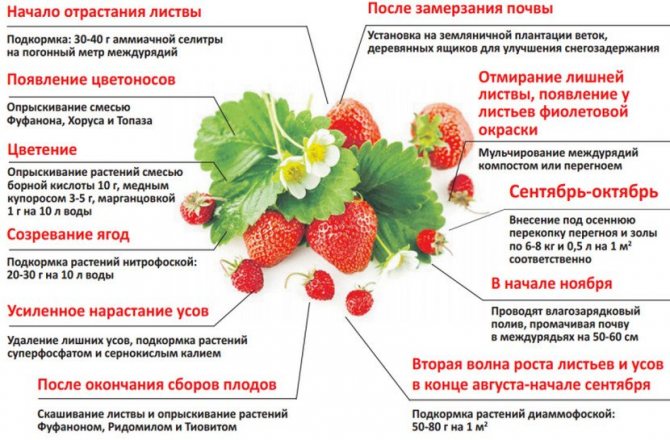

Prevention and control of diseases and pests
One of the main problems of growing strawberries is high susceptibility of the culture to a variety of infections, fungal parasites and all kinds of insect pests... They use plantings not only for parasitism, but also for obtaining offspring, which in just a season can lead to the death of plantings. Therefore, an effective system of chemical protection of the beds is an indispensable measure for the care of strawberries.
Read more about the Vima strawberry variety.
Scheme of preventive treatment of strawberries against infections and pests:
| Period | Diseases and pests | Drugs |
| Formation of buds | Powdery mildew, gray rot | Alirin, Fundazol, Boileron |
| Leaf spot | Horus, 1% Bordeaux mixture | |
| Before flowering | Gray mold, powdery mildew | Alirin, Fundazol, Boileron |
| Leaf spot | Horus, 1% Bordeaux mixture | |
| Spider mite | PSK, Kemifos, Fufanon | |
| After picking berries | Powdery mildew | Topaz, Alirin, Fundazol |
| Leaf spot | Horus, 1% Bordeaux mixture | |
| Spider mite, weevil | Aktellik, Kemifos, Novaktion |
If it was not possible to prevent infection of strawberries, you can overcome all kinds of fungal infections with any fungicide based on copper compounds ("Quadris", "Amistar", "Skor", etc.). Spraying is carried out twice, with an interval of 14 days, but if necessary, the frequency of procedures is increased to 3.
Wim Kimberly strawberry variety
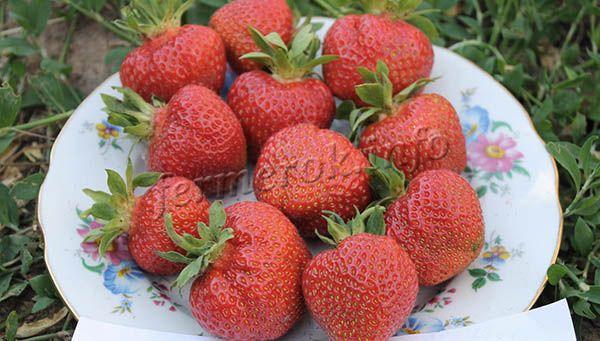

Photo of Wim Kimberly strawberry
Kimberly strawberry was obtained by crossing Chandler and Gorella varieties. The Kimberley species has a medium-early ripening period. Plants are massive, spreading or semi-spreading. The leaves are large, light green, without shine. The buds are white, bisexual. The whiskers on the plant are formed in an average amount.
The berries ripen almost simultaneously. Weighing 35 g on average, scarlet. The shape is heart-shaped or conical, without a neck. The pulp has a high juice content, no voids. Sugar taste, with subtle sourness, tasting score 4.8 points out of 5. Strong aroma.
The yield of the Wima Kimberly strawberry variety is 2 kg / bush per season. The bush is immune to powdery mildew. There is a high resistance to drought and frost. Harvest of universal use.
Reviews of the Vima strawberry variety
Varieties from the Wima series are known to many farmers. Vima strawberries can be used for cultivation both on large plantations and on small, private lands.
- Roman Puzik: “Wim Zant's strawberries are good in every way. Its main drawback is that the crop cannot be transported over long distances - it wrinkles on the road. The rest of the variety is very pleasing. The berries are one-dimensional, large, they leave the stalk without problems. Care is needed regularly, painstakingly, but so with any kind of strawberry - a big harvest can be obtained only by investing a lot of time and effort. "
- Maria Kulish: “Ksima chose the variety according to the reviews and recommendations of friends. I have been growing this strawberry for over 2 years. Pleases with large harvests and rich sweet, juicy taste. The bushes have not hurt anything for two years, but 1-2 times a year I do preventive treatments with fungicides and insecticides of a wide spectrum, maybe that's the case. "
- Oksana Koroleva: “A year ago I decided to update the strawberry bed with a new variety. I ordered Wim Kimberly's strawberry at random. The bushes grew quickly, in the summer heat and even dead wood for 3 weeks in July, reacted normally. The harvest was more than worthy - the berries are big, tasty, beautiful, even send them to the exhibition! But for the winter I insulate it, just in case, it will be too bad to lose such good bushes. "
How to care for strawberries in the first year
For seedlings of strawberries, two leaves with a peduncle are enough. It should be planted at the end of May in a lighted place with fertile soil. The bushes bloom and gain color throughout July. For the second time, strawberries bloom in early August, and at the end of the month ripe, tasty pointed, quickly ripening berries appear. However, there will be fewer of them than in the first harvest.
Reconstruction strawberries are very tender compared to regular strawberries. It has thin leaves and stems. In the first year, strawberries may not give a mustache, but in the future this will not be a problem. For the winter, the plants are covered with spruce branches, old straw or hay.
As soon as the snow melts, bright green leaves appear. The plant of the remontant type develops faster than ordinary strawberries; it produces flower stalks earlier and gains color. In order for the bushes to grow well, it is recommended to loosen the garden bed where they are located and feed it with a weak mullein solution. After the berries are ripe, the plant gives off tendrils. The first sprouted mustache can be transplanted to another bed.

